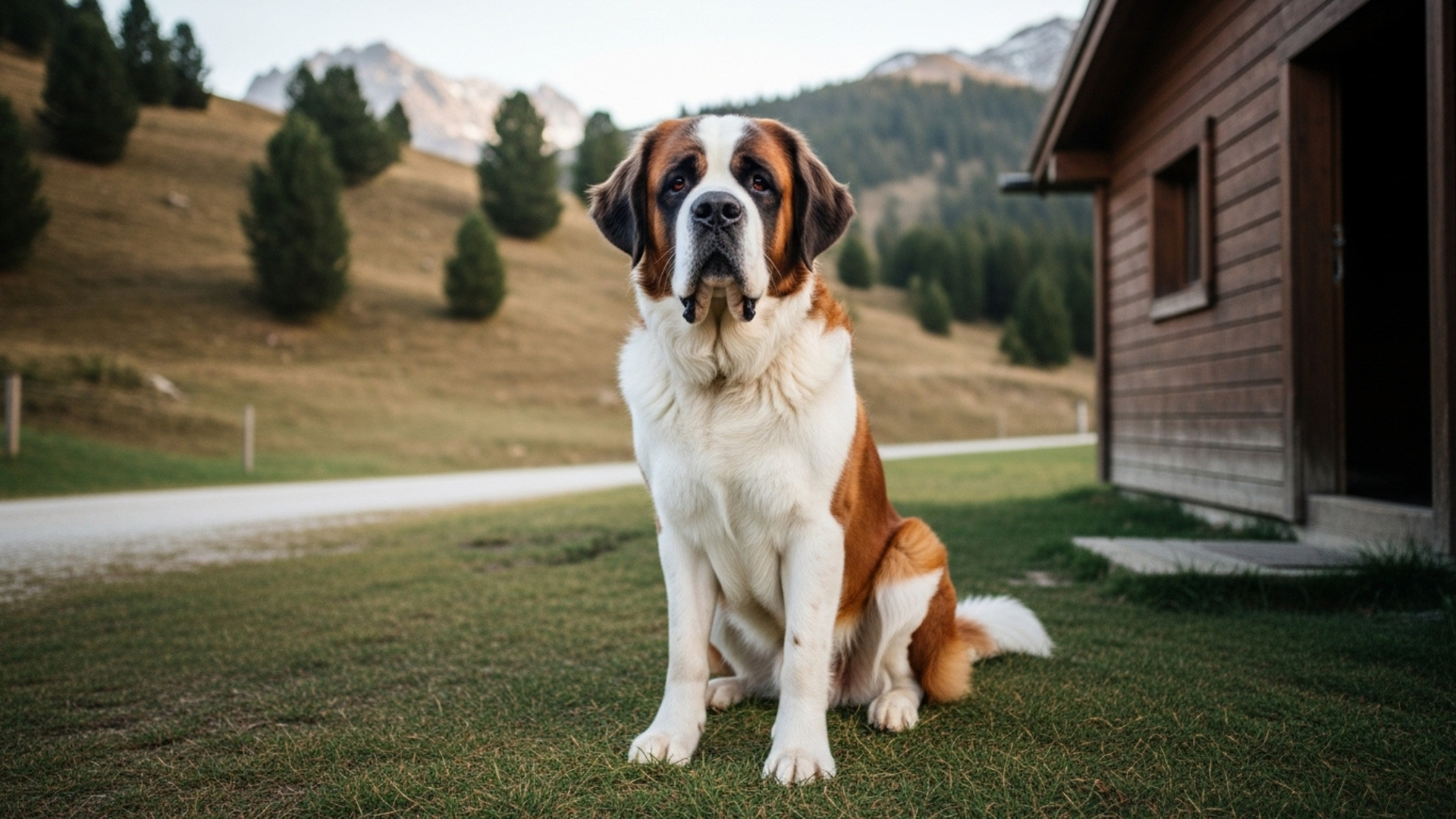Did you know some dogs are so large that early travelers wrote entire journals about meeting them? Giant breeds have always sparked wonder, not only for their size but for the surprising mix of strength, gentleness, and charm they bring to the world.
Whether bred to guard farms, pull heavy loads, or stand watch over royalty, these dogs have histories filled with adventure and purpose. Today, they continue to impress families, farmers, and dog lovers who admire their loyal hearts as much as their towering frames.
Exploring their origins reveals how these impressive companions evolved from ancient working partners to beloved modern pets. As you discover what makes each giant breed unique, you may find that behind every massive paw and lionlike silhouette is a personality full of warmth, intelligence, and a dash of goofiness.
Ready to meet the canine giants that have shaped centuries of stories and companionship?
Magnificent Giant Dog Breeds: Explore Their History and Traits
1. Great Dane
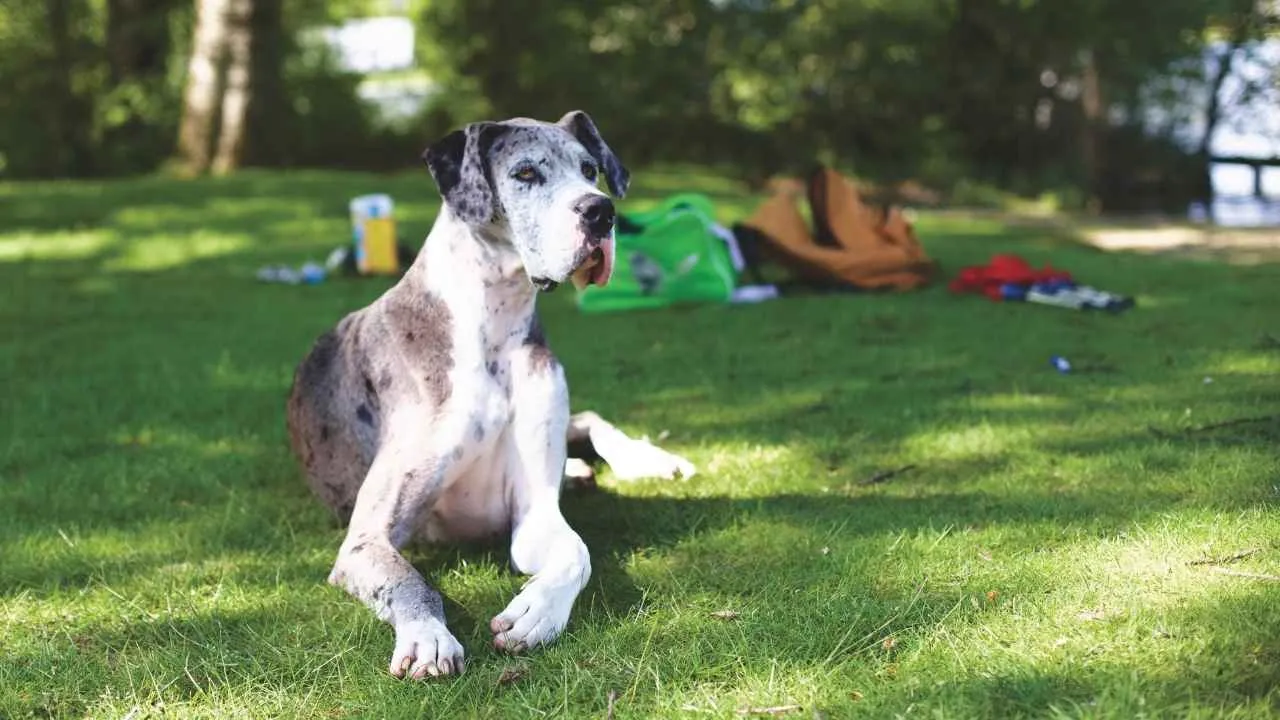
The Great Dane is one of the most iconic giant dog breeds, admired for its tall stature and balanced body shape. Its appearance blends power with elegance, creating a dog that stands out as both athletic and majestic.
Great Danes were originally developed for boar hunting in Germany, which shaped their strength and stamina. Over time, they transitioned into devoted companions known for affectionate behavior with their families.
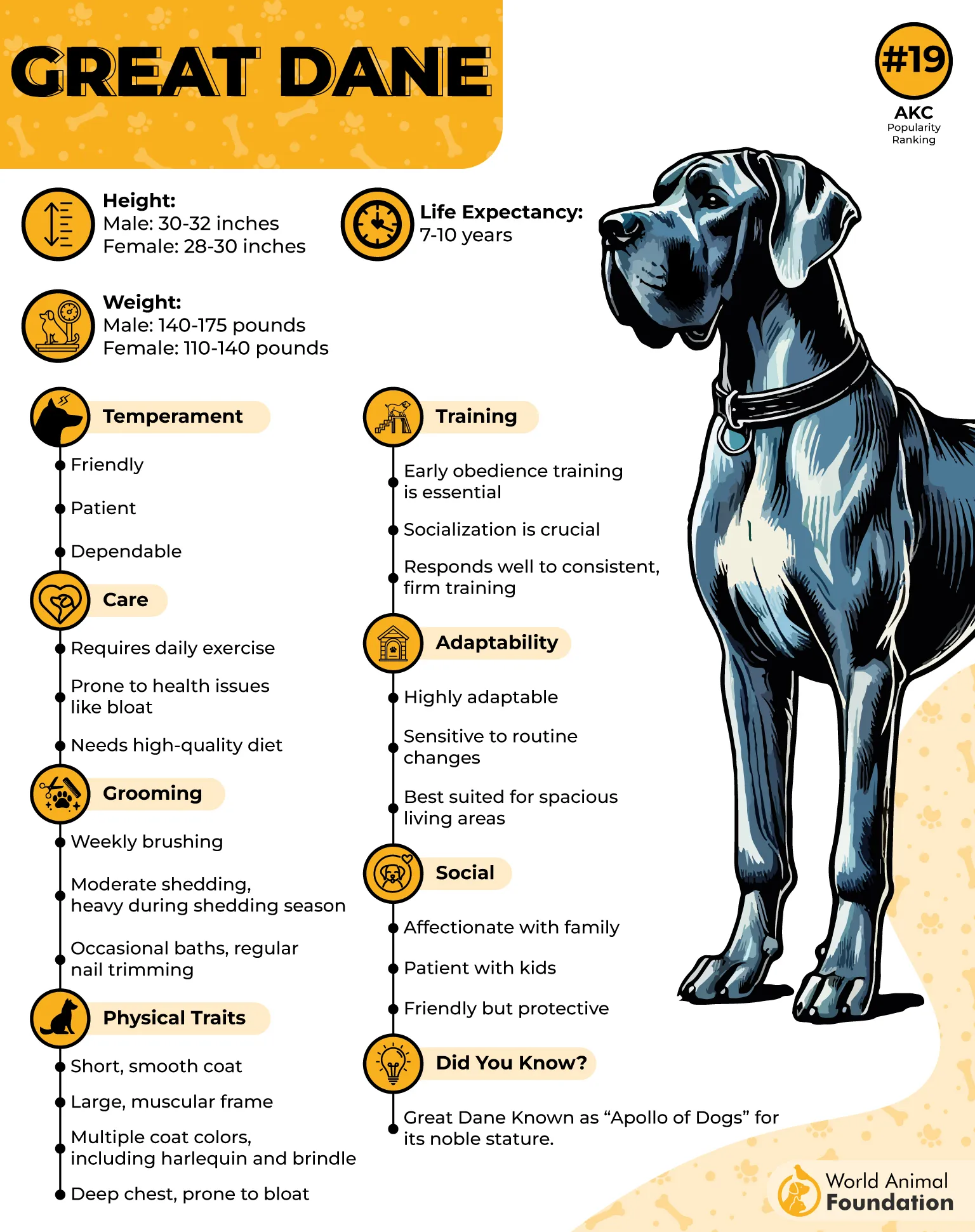
This breed’s short, smooth coat makes grooming fairly simple, requiring only regular brushing to remove loose hair. Their size still means owners must stay consistent with nail trimming and routine care.
According to the AKC, Great Danes can be prone to gastric dilatation volvulus, making awareness of bloat extremely important for anyone owning this giant breed. Monitoring feeding schedules and activity around meals is especially helpful.
Proper training from puppyhood ensures that these towering dogs become calm, confident family members. Early socialization helps them adapt well to everyday activities and environments.
Fun Fact
A Great Dane standing on its hind legs can easily surpass the height of many adult humans, often making them taller than the people they live with.
2. English Mastiff

The English Mastiff is one of the heaviest dog breeds in the world, often weighing more than many adult humans. Its towering height, paired with a massive, muscular build, makes it an unmistakable giant.
Despite its size, the Mastiff is known for being gentle and loyal with its family. This calm, steady temperament has made it a dependable guardian for centuries.
The breed’s long history stretches back thousands of years, with records of Mastiff-type dogs appearing in ancient civilizations. Medieval England relied on these dogs as guards and estate protectors.
Due to their size, Mastiffs can face health challenges such as hip dysplasia, eye problems, and bloat. Owners must keep up with veterinary visits and maintain a responsible feeding routine, as noted by PetMD.
Grooming needs are moderate, with a short coat that requires regular brushing and attention to skin folds. Their large jowls can lead to drooling, making daily cleaning beneficial.
Fun Fact
After World War II, the English Mastiff population dropped to dangerously low numbers, but dedicated breeders were able to revive and restore the breed.
3. Saint Bernard

The Saint Bernard is a legendary working dog that originated in the Swiss Alps, where it helped rescue travelers trapped in snow and storms. Its powerful build allowed it to navigate harsh mountain terrain with reliability.
These dogs became famous for locating people buried in snow and guiding them back to safety. Stories of their lifesaving missions spread across Europe, turning the breed into a symbol of Alpine heroism.
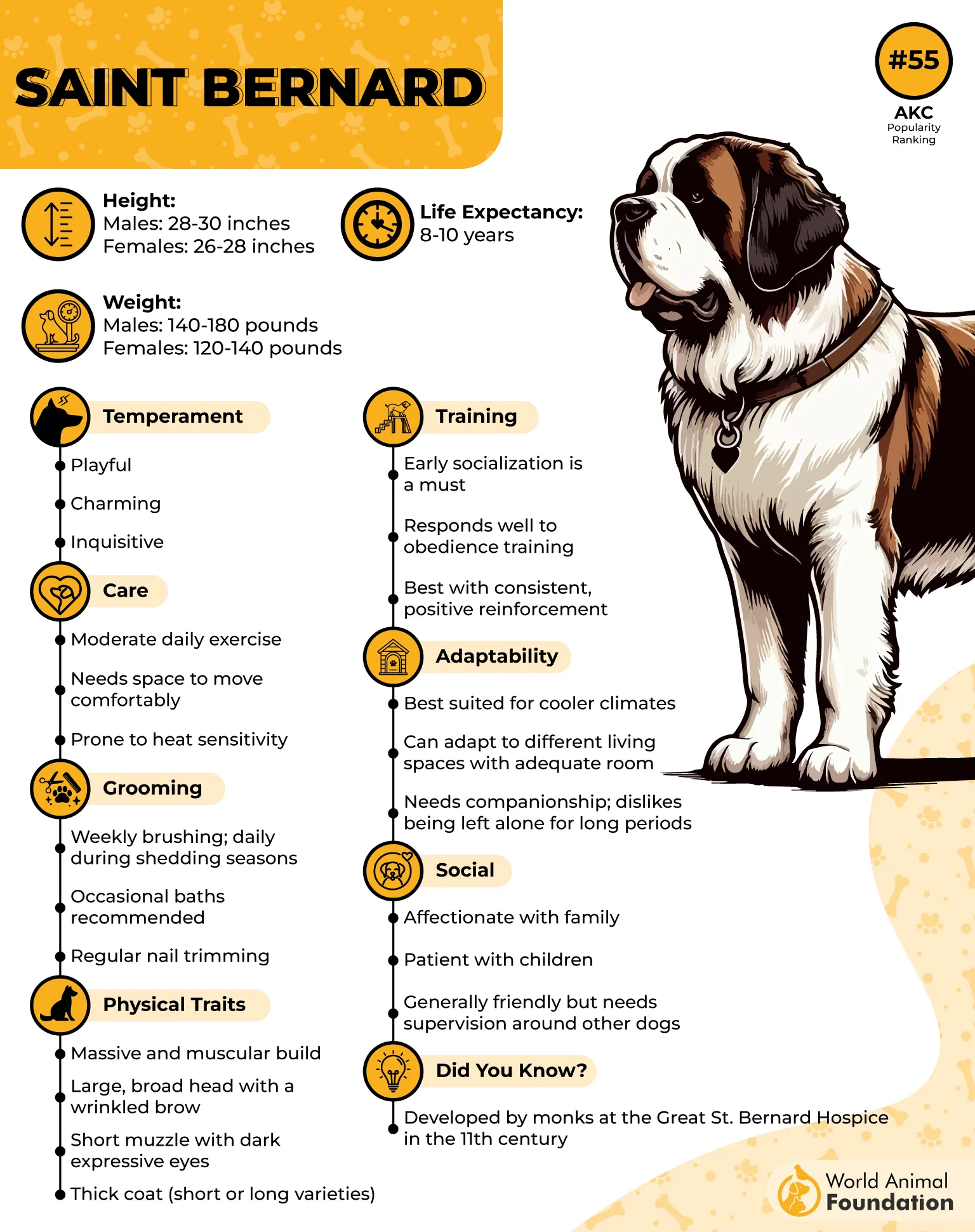
A Saint Bernard’s appearance includes a muscular body, massive head, and expressive eyes that give it a gentle, approachable look. These traits helped it remain calm while aiding frightened travelers.
Today, the breed is known as a friendly, affectionate family companion that enjoys being near its people. Houses with room to accommodate their size are best suited for this gentle giant.
As per Britannica, health and grooming needs require attention, especially for long-haired Saints. Regular brushing and joint care help keep them healthy and comfortable.
Fun Fact
One famous Saint Bernard named Barry reportedly saved more than 40 people during his service in the Alps, earning him a place in Swiss history.
4. Newfoundland
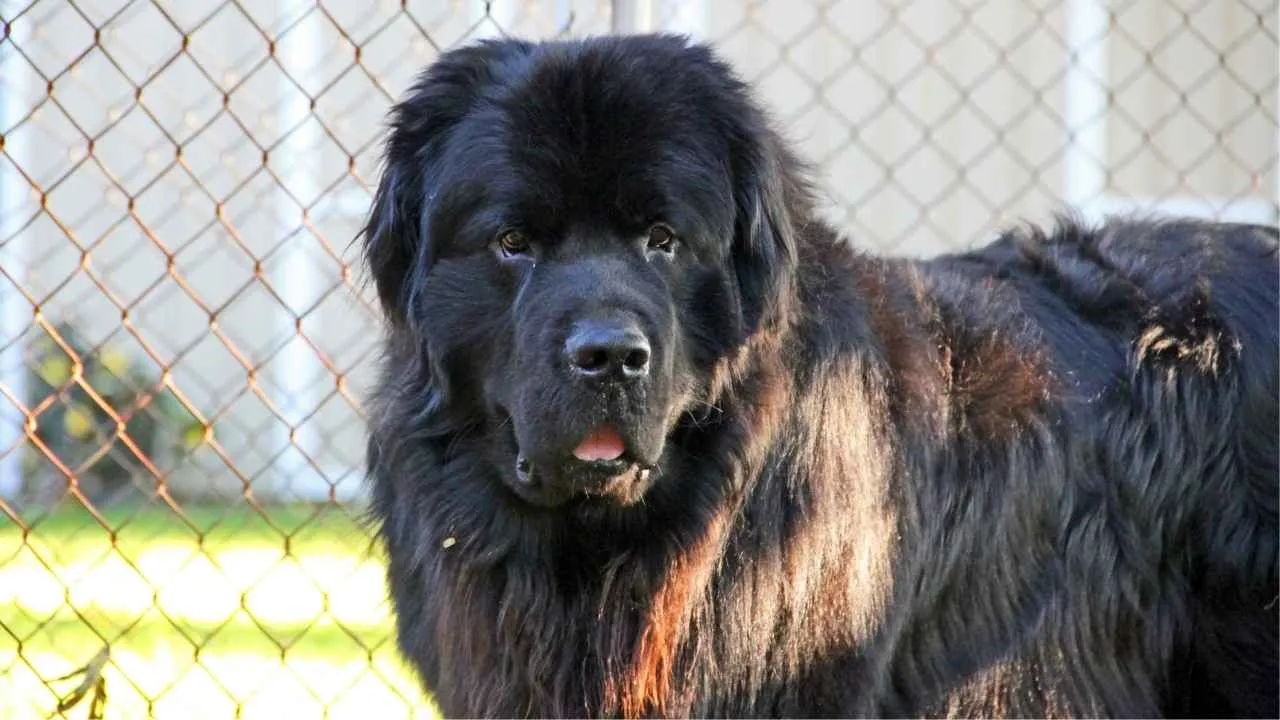
The Newfoundland is a giant working breed famed for its strength and swimming ability. It was developed in coastal Canada to help fishermen with heavy tasks such as pulling nets and assisting in water rescues.
With a thick water-resistant coat, strong limbs, and natural swimming instincts, the Newfoundland became one of the most reliable water-rescue dogs in history. These traits still make it a standout among large dog breeds.
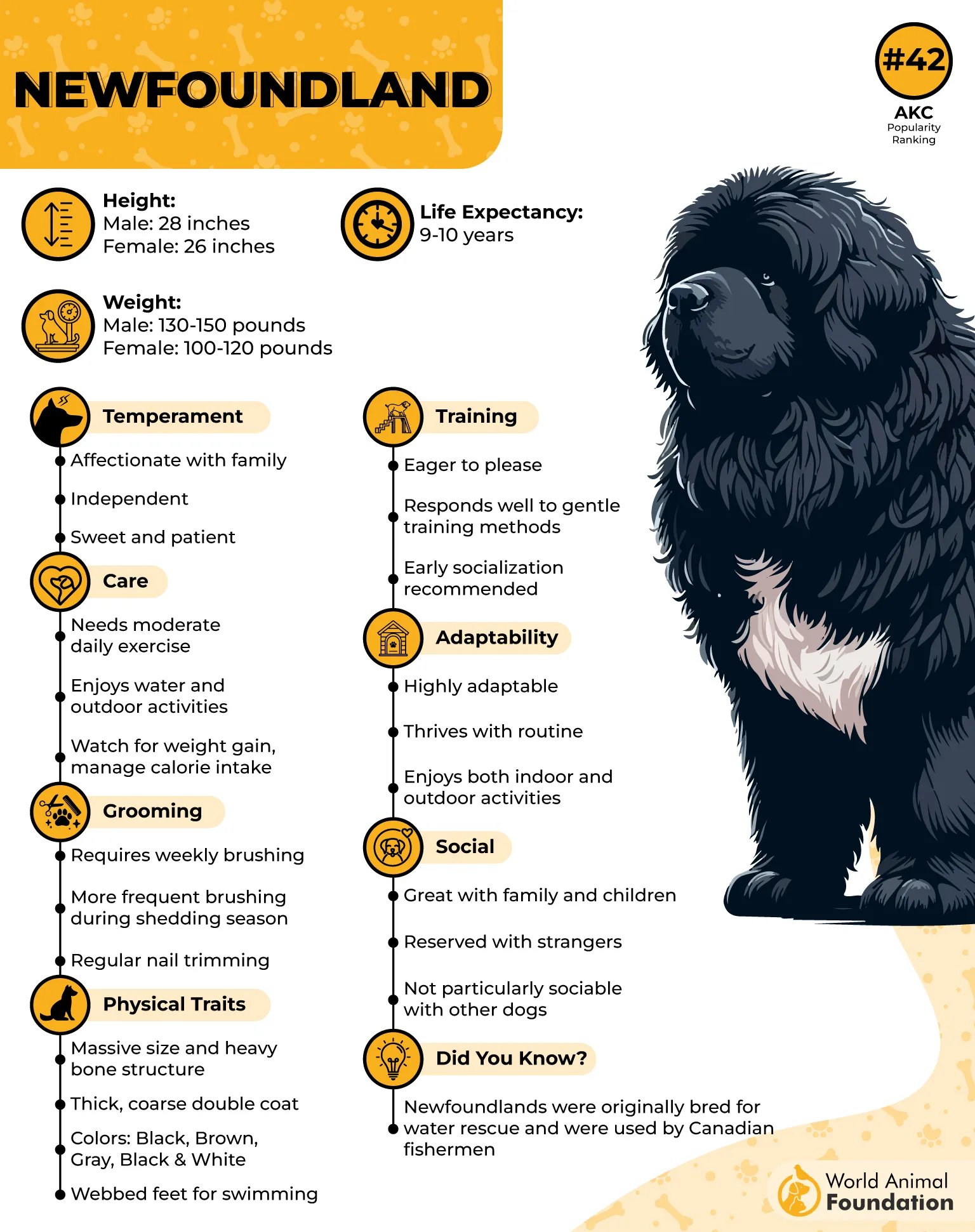
In family settings, Newfoundlands are gentle, calm, and social. Their patient nature has earned them a reputation as excellent companions for children when well trained.
Care involves regular brushing to manage the dense double coat and keep it free of mats. Exercise should be consistent but moderate, helping protect their joints.
Like many giant breeds, they can face health concerns such as hip dysplasia, heart disease, and bloat. Early health screenings and proper nutrition contribute greatly to long-term wellness.
Fun Fact
Newfoundlands were so skilled at water rescue that sailors often kept them aboard ships to help save crew members who fell overboard.
5. Irish Wolfhound

The Irish Wolfhound is regarded as one of the tallest dog breeds in the world, often standing well above many other giants. Its long legs and commanding height give it a striking silhouette.
Historically, this breed hunted wolves and large game in Ireland, making speed and power crucial traits. Its ancestry reaches far back into Celtic history and early European writings.

Despite its hunting past, the Irish Wolfhound is known today for a calm and affectionate nature. It tends to form strong bonds with its household and is often patient with children.
The breed has a shorter life expectancy than many others due to its massive size. Owners should watch for conditions such as bloat, heart disease, and bone cancer.
Its wiry coat benefits from weekly brushing, keeping it free of loose hair and debris. Early training and socialization help these giant dogs become well-mannered companions.
Fun Fact
The Irish Wolfhound is frequently described as the tallest of all recognized dog breeds, with males easily surpassing the height of many other giants.
6. Tibetan Mastiff

The Tibetan Mastiff is a powerful guardian breed originally developed to protect livestock and property in the Himalayan region. Its large frame and dense coat help it thrive in cold climates. Many people admire its independent spirit and impressive presence.
This breed is known for being observant and highly protective of its territory. While loyal to its family, it often remains reserved with strangers. Early training helps channel its natural guarding instincts.
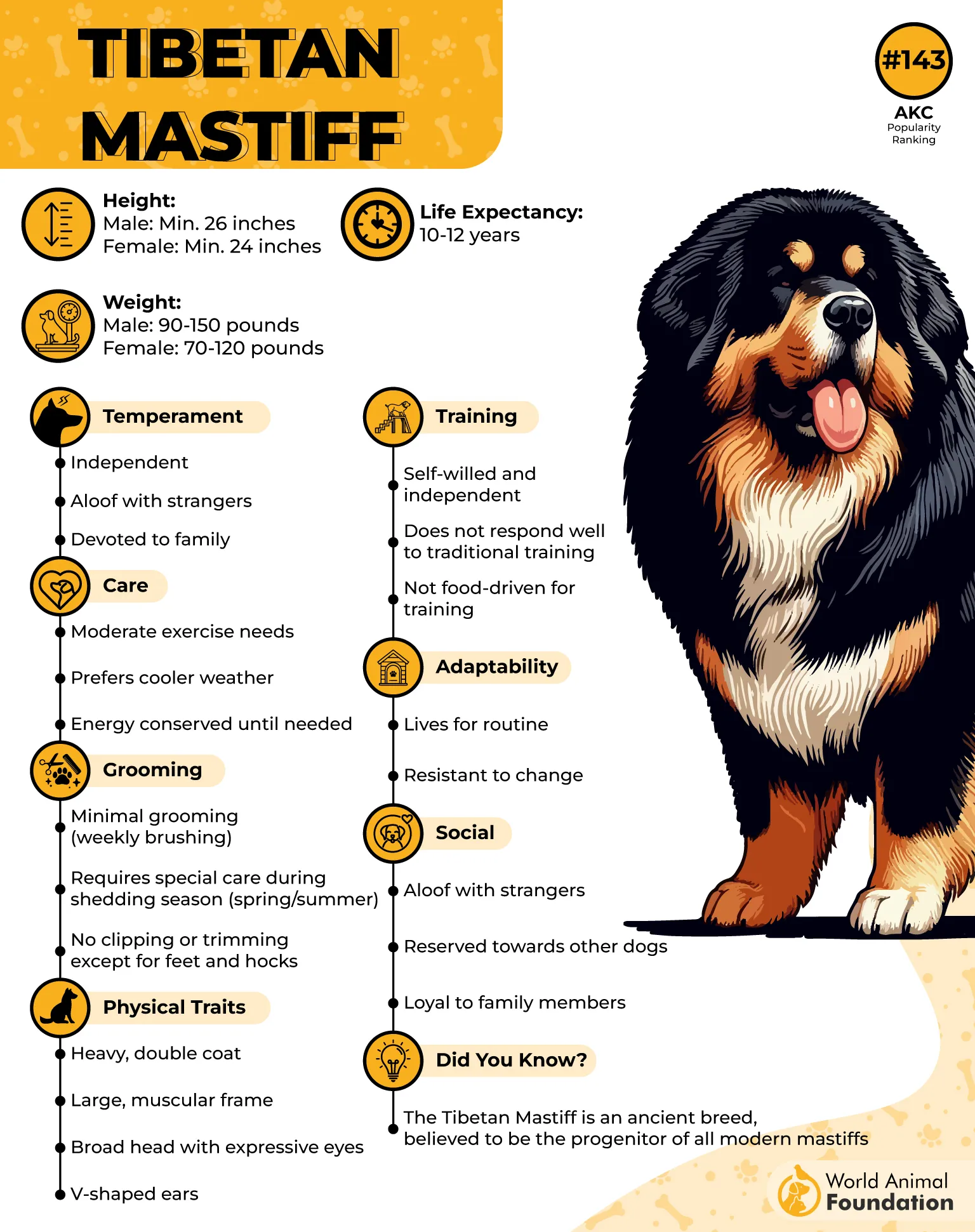
A Tibetan Mastiff typically grows to a substantial size, making it one of the giant dog breeds highlighted for its strength and bone structure. Owners must ensure the dog has room to move comfortably. Regular exercise keeps this big breed healthy.
Grooming needs vary depending on the season, as the coat thickens during cold months and sheds heavily when temperatures rise. Weekly brushing helps manage loose hair. The coat’s texture naturally repels dirt.
As with other giant breeds, health considerations include monitoring joints and weight management. Responsible breeding practices remain essential for long-term well-being. Owners benefit from working with reputable professionals.
Fun Fact
The Tibetan Mastiff’s booming bark is famous for carrying long distances, a helpful trait for guardians protecting remote mountain villages.
7. Bernese Mountain Dog
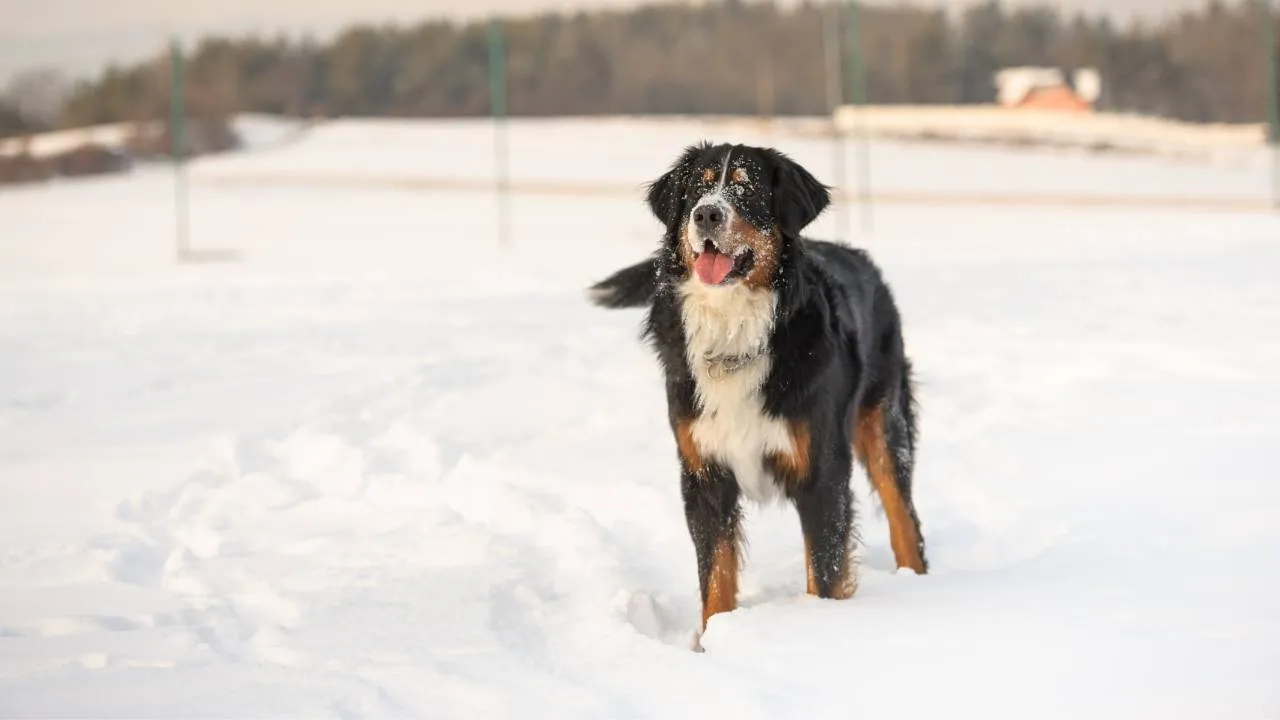
The Bernese Mountain Dog originated in Switzerland as a working farm breed valued for drafting, herding, and guarding. Its striking tricolor coat adds to its popularity among giant dog lovers. This breed is admired for its strong yet gentle nature.
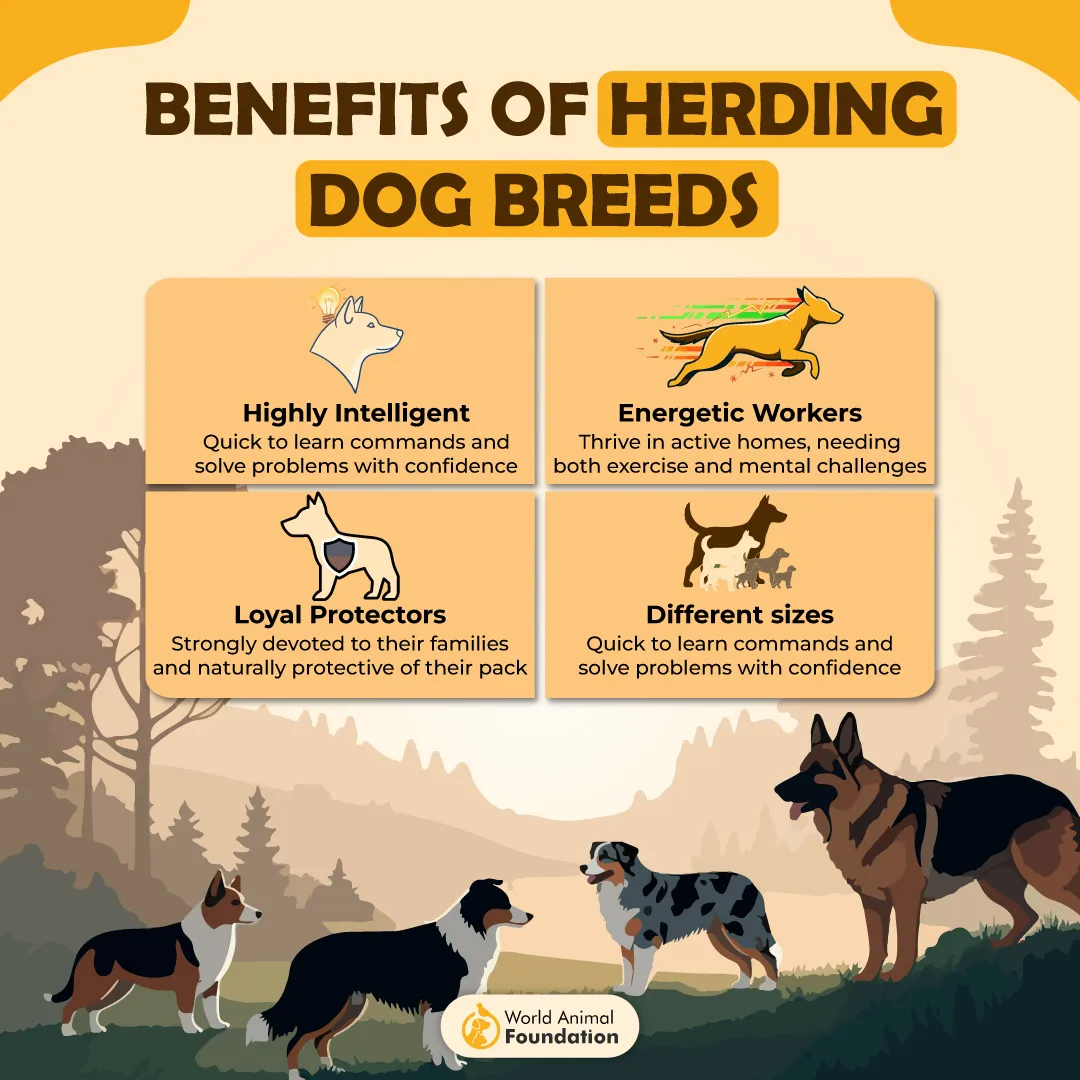
Berners are known for being affectionate, patient, and friendly with families. Their calm personality makes them approachable companions. They often enjoy being involved in daily household routines.
Because the breed was designed for outdoor labor, it benefits from regular physical activity. Pulling carts and performing tasks historically shaped their athletic abilities. Modern exercise keeps them fit and content.
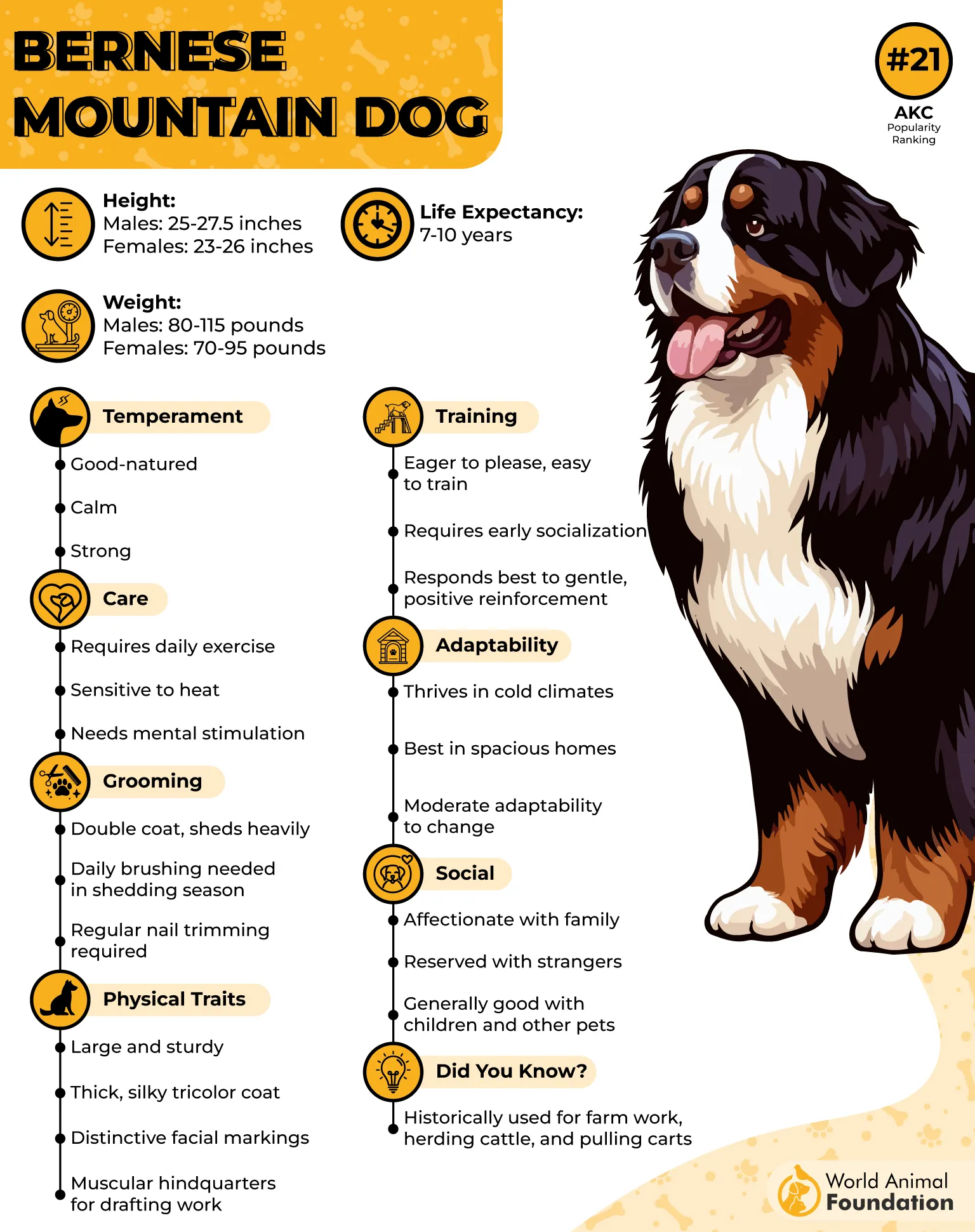
The long coat requires consistent brushing to prevent tangles and reduce shedding. Routine grooming also helps maintain the coat’s shine and comfort. Owners should pay attention to seasonal shedding periods.
Like many large dog breeds, Berners can face health concerns such as joint issues and shorter life expectancy. Responsible care, proper nutrition, and veterinary checkups help support overall health.
Fun Fact
Bernese Mountain Dogs were once used to pull heavy carts loaded with milk and cheese across Swiss farms, showing impressive strength for their size.
8. Leonberger
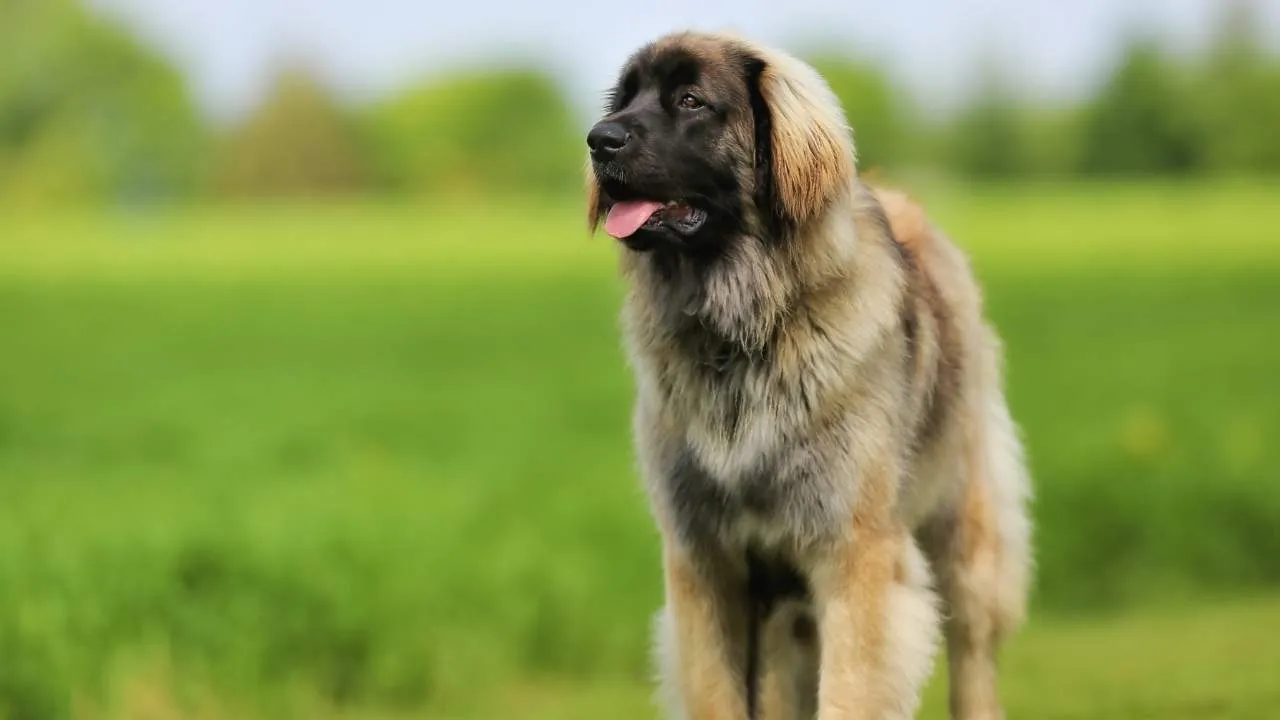
The Leonberger was bred to resemble a lion, giving it a bold and eye-catching appearance. This giant breed combines elegance with working-dog strength. Families often appreciate its affectionate and friendly way of interacting.
Leonbergers typically do well with active households, as they enjoy outdoor adventures and steady movement. Their stamina reflects their original roles, helping with farm tasks and draft work. Physical activity supports their overall well-being.
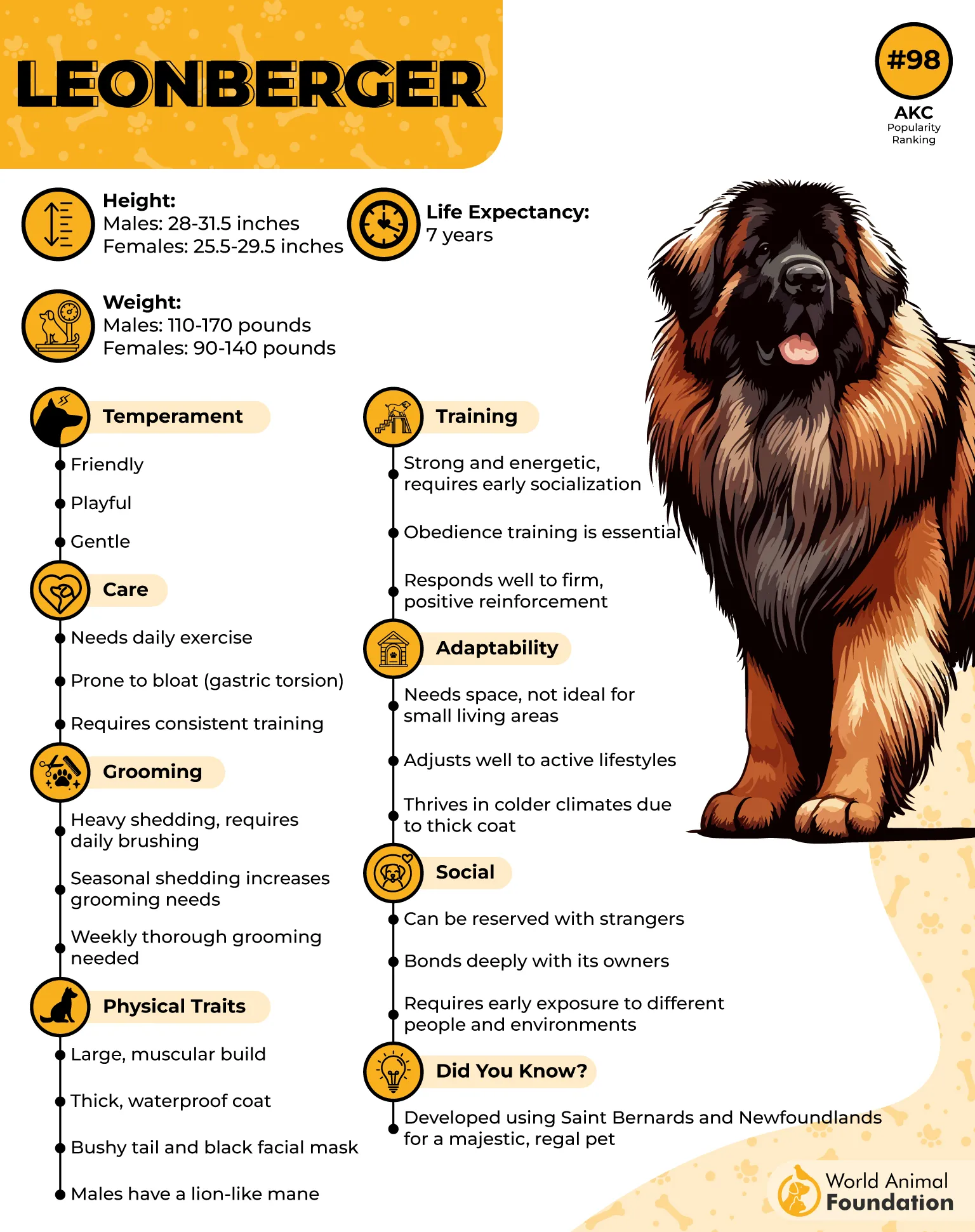
The breed’s thick, water-resistant coat requires consistent grooming. Brushing several times per week helps keep the coat from matting. Owners should take extra care during seasonal shedding.
With their stable temperament, Leonbergers often become dependable companions. They can be good with children and other pets when socialized early. A calm environment encourages their gentle behavior.
Health considerations for this giant dog breed include joint issues and certain genetic conditions. Regular veterinary monitoring and mindful breeding practices help prevent common problems.
Fun Fact
The Leonberger once served as a working dog that pulled carts and performed labor tasks, showcasing both endurance and impressive strength.
9. Anatolian Shepherd

The Anatolian Shepherd is a powerful livestock guardian originally developed in Turkey. Its history is rooted in protecting herds across wide, rugged landscapes. This hardy working breed is known for exceptional independence.
Because of its protective background, the Anatolian Shepherd often watches over its environment with strong awareness. It forms deep bonds with its family while remaining cautious with unfamiliar people. Early socialization helps guide its instincts.
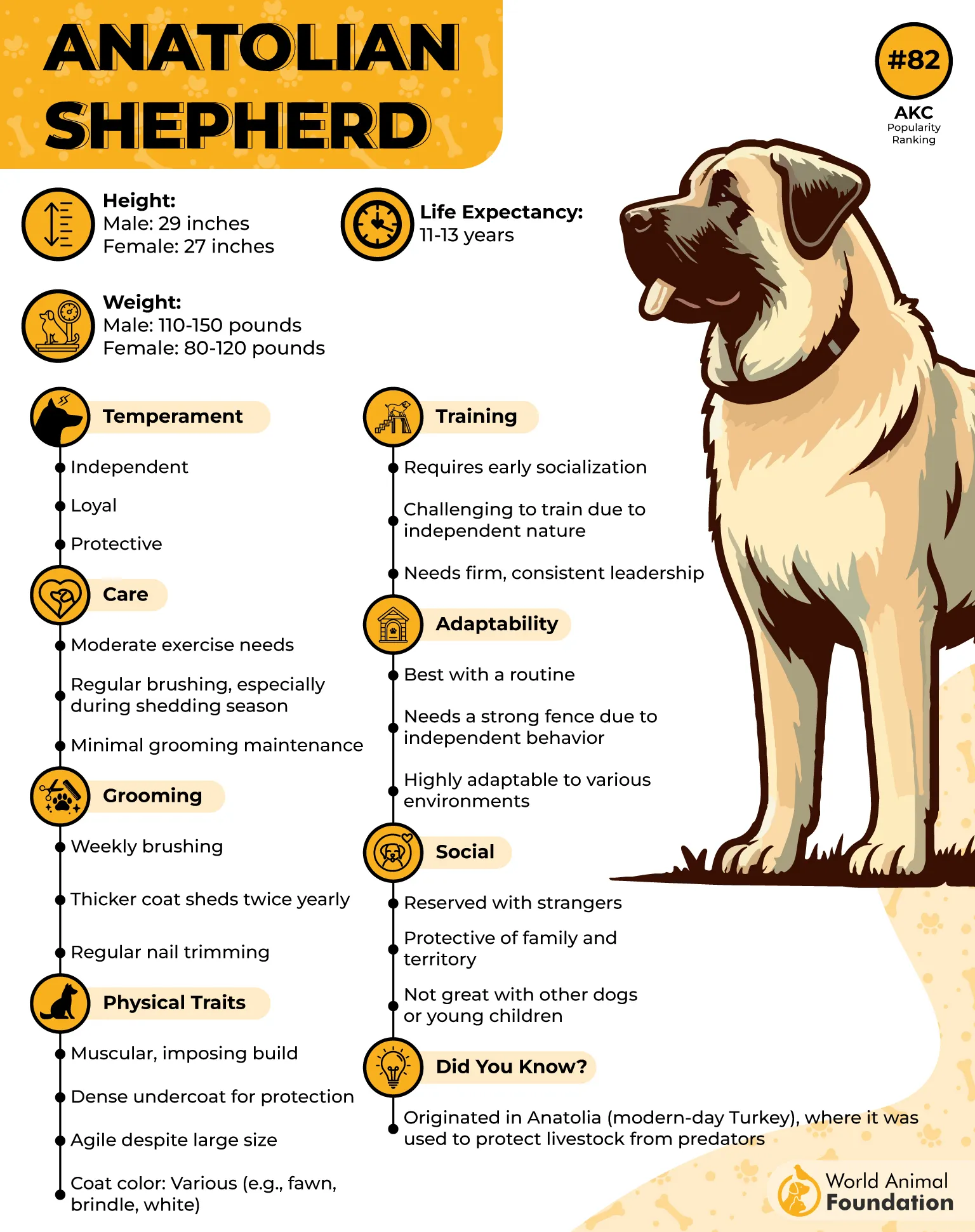
This giant breed grows into a muscular, athletic dog capable of covering long distances with ease. Owners should prepare for a breed that thrives with regular movement. Space and structure help ensure balanced behavior.
The coat is dense and weather-resistant, making grooming simple for most of the year. Brushing keeps shedding manageable and maintains coat health. Bathing is needed only occasionally.
Health factors to consider include joint care and weight management. Keeping the dog fit and well-exercised helps reduce stress on developing bones. Responsible breeding also plays a key role in wellness.
Fun Fact
Anatolian Shepherds are so effective at guarding livestock that they are sometimes used in conservation programs to protect wildlife by reducing livestock-predator conflict.
10. Great Pyrenees
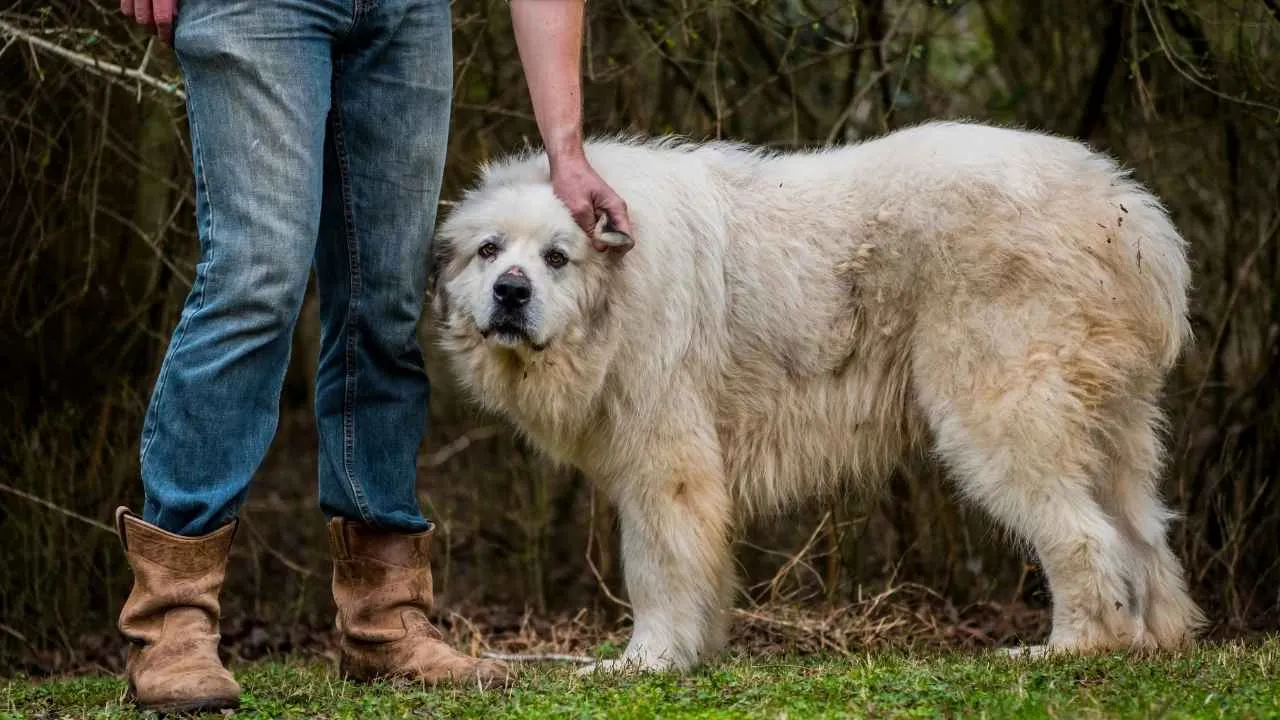
The Great Pyrenees is a majestic livestock guardian bred in the mountains between France and Spain. Its thick white coat and calm expression make it easily recognizable among giant breeds. This dog’s confident nature comes from centuries of working in harsh terrain.
Great Pyrenees dogs are known for being gentle and patient with family members. Their protective instincts help them stay alert to anything unusual. Proper training builds a well-balanced companion.
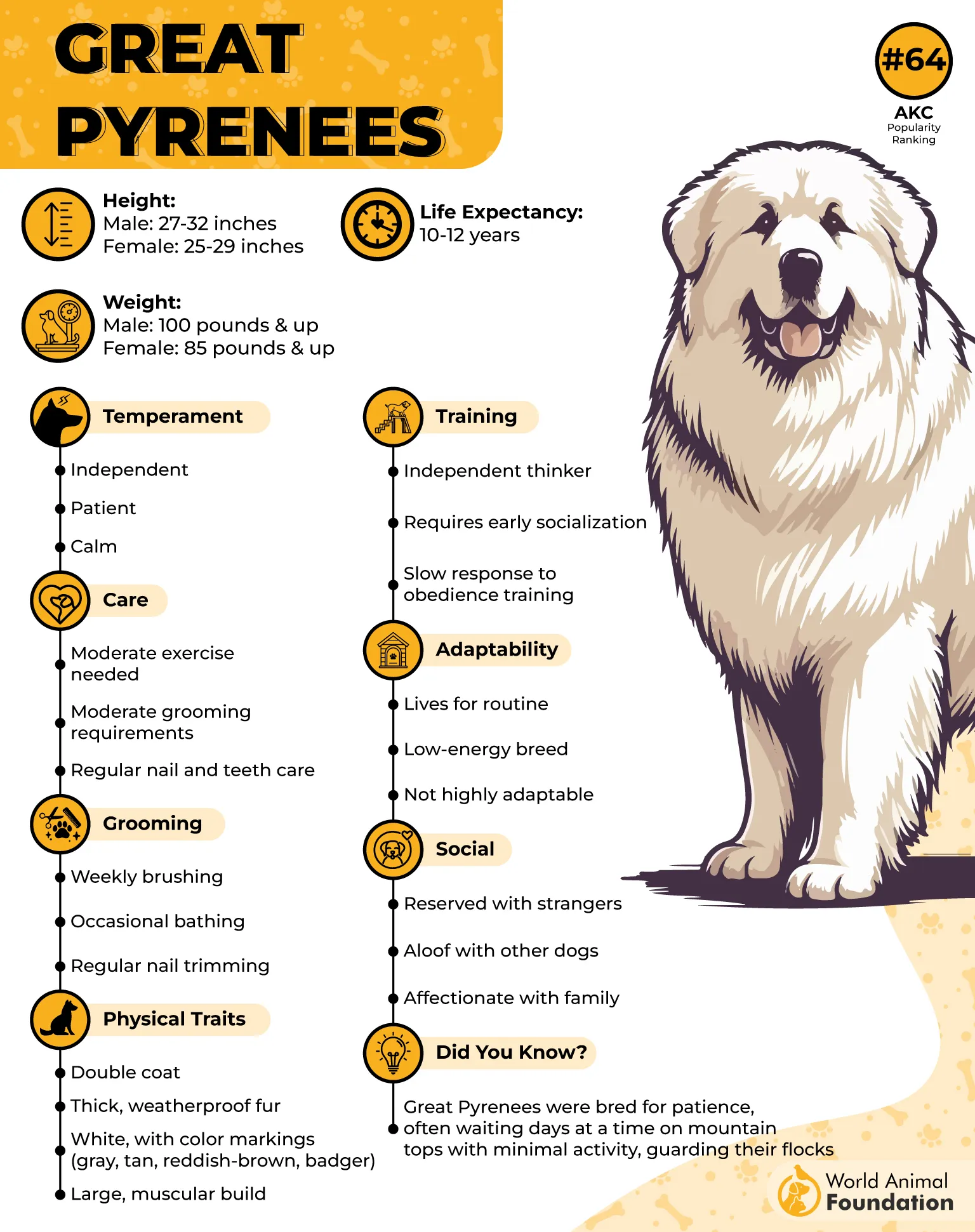
The double coat offers excellent insulation, making the breed well-suited for colder climates. Regular brushing helps control shedding and keeps the coat healthy. Seasonal grooming needs increase when the undercoat loosens.
This giant breed enjoys moderate daily exercise, such as walking or exploring open space. Their working background means they appreciate having tasks or a routine. Mental stimulation is helpful for overall happiness.
Owners should watch for issues common among large dog breeds, including joint stress and weight gain. Planned nutrition and veterinary checkups help maintain long-term health.
Fun Fact
Great Pyrenees dogs were historically paired with shepherds to guard flocks at night, earning a reputation as trustworthy protectors in mountain regions.
FAQs
How do giant dog breeds differ in personality compared to smaller breeds?
Giant dogs often show calm, steady temperaments and a more relaxed energy level compared to smaller breeds. They tend to bond deeply with their families and display protective qualities, making them excellent family dogs when trained from an early age.
What health challenges are common among magnificent giant dogs?
Large breeds can experience joint stress, heart issues, and a higher risk of bloat due to their size and average weight. Monitoring nutrition, exercise, and early-age veterinary care helps prevent common concerns.
How much space and exercise do giant dogs truly need?
These big dogs benefit from outdoor space, daily movement, and structured routines to stay healthy. Most require moderate activity and mental stimulation to avoid separation anxiety and maintain a sweet temperament.
Conclusion
Magnificent giant dog breeds explore their history and traits in remarkable ways, showing how the biggest dog breeds were originally bred for tasks ranging from guarding to pulling and working alongside humans.
Each majestic breed carries a mix of gentle breed behavior, powerful guard dog instincts, and sweet temperament, making many large breed dogs great family dogs when given proper training and outdoor space. Their thick double coat, water-repellent outer coat, webbed feet, or lion-like mane often reflect the cold weather environments where they first lived.
Other dogs such as the French Mastiff, Black Russian Terrier, Neapolitan Mastiff, Dogue de Bordeaux, Giant Schnauzer, Cane Corso, Labrador Retriever, and even the famous Great Dane called Zeus continue to stand out as majestic creatures, loyal working dogs, extremely protective companions, and some of the best dogs admired by European royalty, private English game preserves, big game hunter traditions, and country estates.


